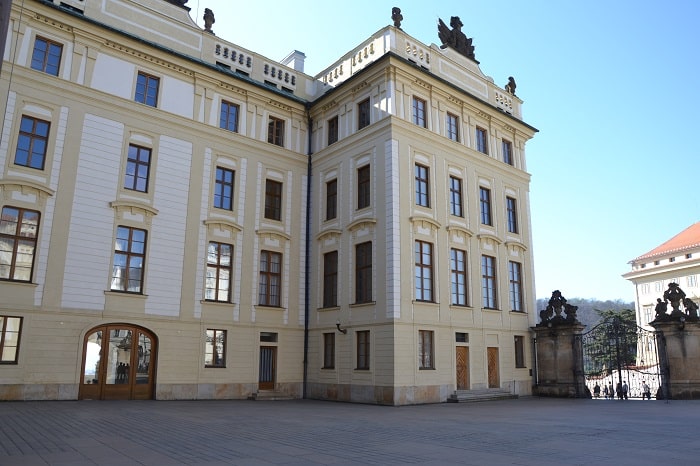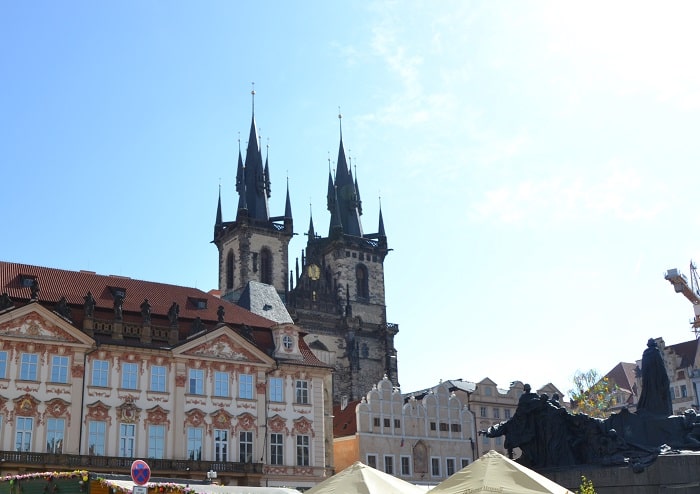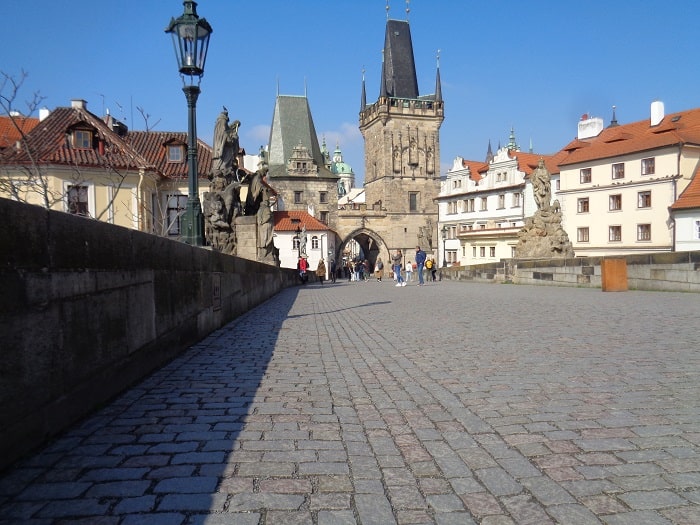Prague Castle
Prague Castle occupies the area of more than 70 000 m2 (750,000 sq ft), it’s even listed in the Guinness Book of Records.

The core territory is divided into four courtyards and the most dominant building is St Vitus Cathedral. The periphery includes other important palaces, towers, buildings and gardens.
History
The history of this complex began in 884, with the construction of the Church of the Virgin Mary. Its surviving foundations can be still seen behind the glass in the passage connecting II. and IV. courtyard.
The location of the castle was chosen for strategic reasons. The hill is protected by the Vltava River, from one side, and by natural, deep Deer Moat, from the other.
Centuries flashed by and each ruler contributed to strengthening and remodeling of his residence. Each era left its special mark, so for example, we can still see elements of Romanesque, Gothic and Baroque styles.
The main function of the complex has been preserved till this day. It’s still a place of the most import person in the country – either it was a prince, king, emperor or nowadays a president.
First Courtyard
The Entrance Gate is decorated with sculptures – fighting titans (or gladiators), lion (symbol of the Czech kingdom) and eagle (represents the Habsburg monarchy). They were made in the 18th century by Czech-Austrian sculptor Ignaz Platzer. Modern statues are copies of the original work.

The upper part of the gate is decorated with a golden grille, imperial crown and three Latin letters “MTJ”, it’s an abbreviation of the names of the empress Maria Theresa and her son Joseph II.
The first courtyard was formed in 1763-1771 during the construction of the New Royal Palace. It was made by Austrian architect Nicola Pacassi in Italian-Viennese classicism style. The attics are decorated with sculptures – allegories of war and peace, again these are the works of Ignaz Platzer.
Pacassi made an important innovative change – he connected the castle with the Hradčany square. By doing this, the castle began to be more inviting instead of just being the inaccessible fortress.
The empress Maria Theresa was the one, who ordered a major remake of the castle in order to make it more comfortable during her stays in Czech’s capital. At that time, her every visit meant stressful times for the locals. There simply wasn’t enough space for all the members of the Viennese court. By the time Habsburgs arrived, the officials, living in the castle, were obliged to vacate any rooms, which were at least a little bit suitable for living. Interestingly enough, this rule also applied to the houses in the nearby areas – parts of Hradčany and Malá Strana. Furniture, household items such as bedding, dishes etc. were borrowed from the nobility, clergy and even wealthy artisans.
Everything had to be cleaned and polished, poor people were relocated, police increased patrols.
The baroque stone gate was built in the early 17th century during the reign of the Austrian Emperor Matthias (it was named after him) and was connected to the original fortifications. It’s a work of an Italian architect, Giovanni Filippi. The coats of arms of the lands, which belonged to Habsburgs, are located under the cornice of the gate.
At the top of the gate, there is a gilded inscription glorifying the military exploits of the emperor, and bellow you can see a bas-relief of the ruler’s sign, supported by two griffins.
Both south (right) and north (left) wings of the palace were intended for the guests. However some of the rulers also preferred to live here. For example, the first Czechoslovak president Tomáš Garrigue Masaryk lived here during his first five years of the presidential term.
On the top of the southern wing you can see a flagpole with the presidential flag. When the president goes abroad, the flag is taken down.
In the small passage right after the gate, you can see the Pacassi staircase on the right. It leads to the reception rooms on the second floor. On the opposite side there is another staircase by Plečník, which leads through the Column Hall to the Spanish Hall, where balls, concerts and other ceremonial events are usually held.


